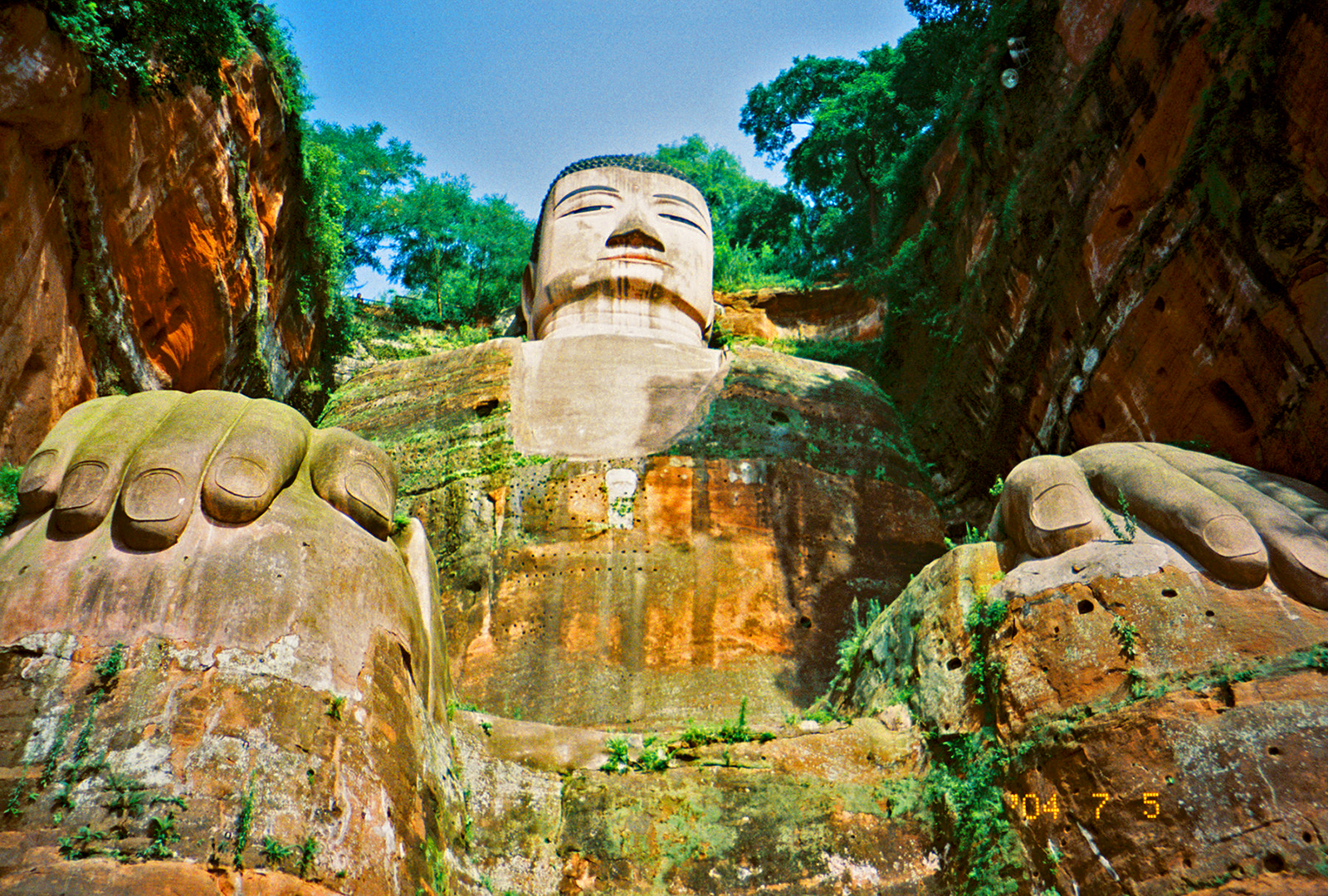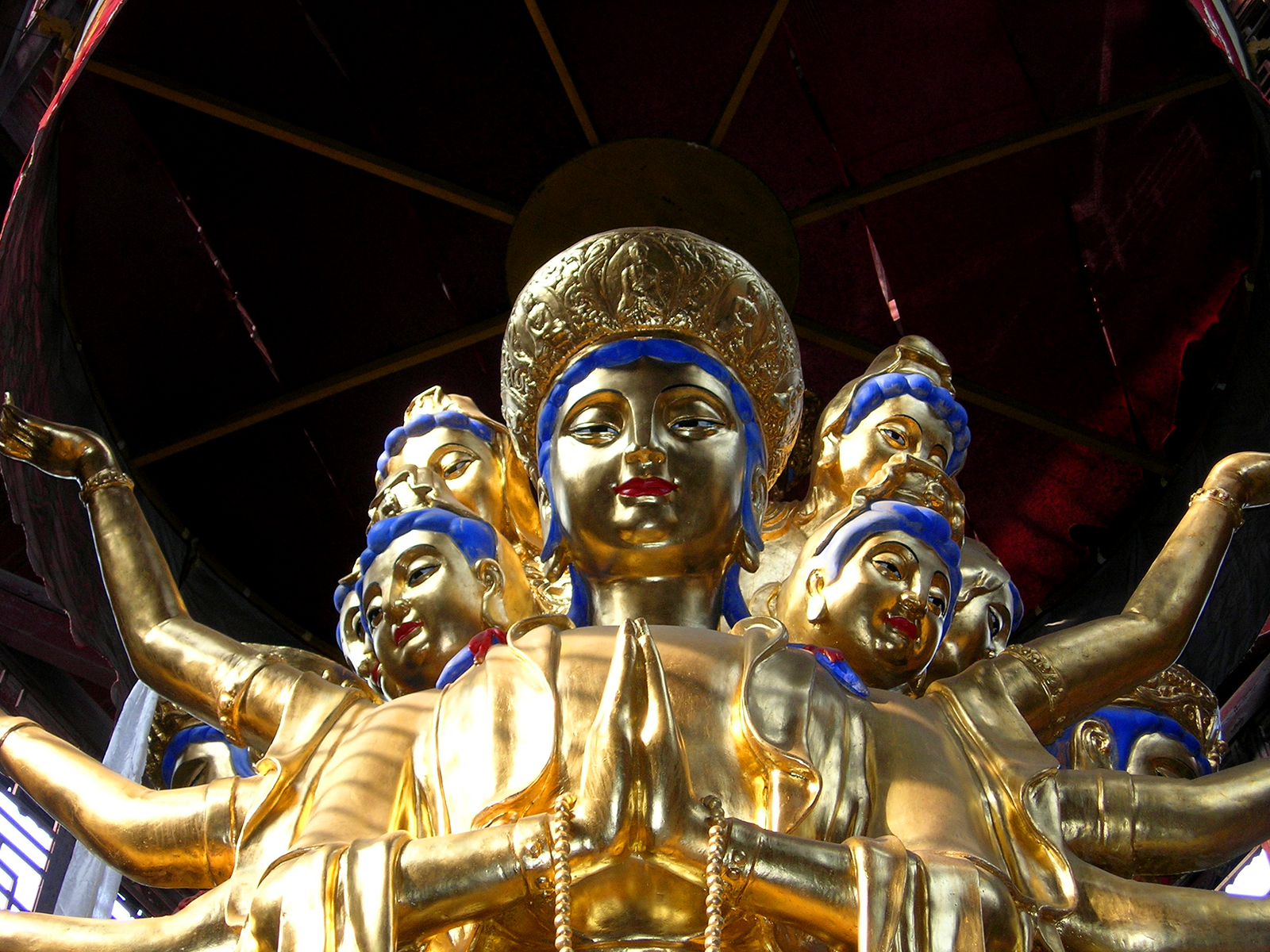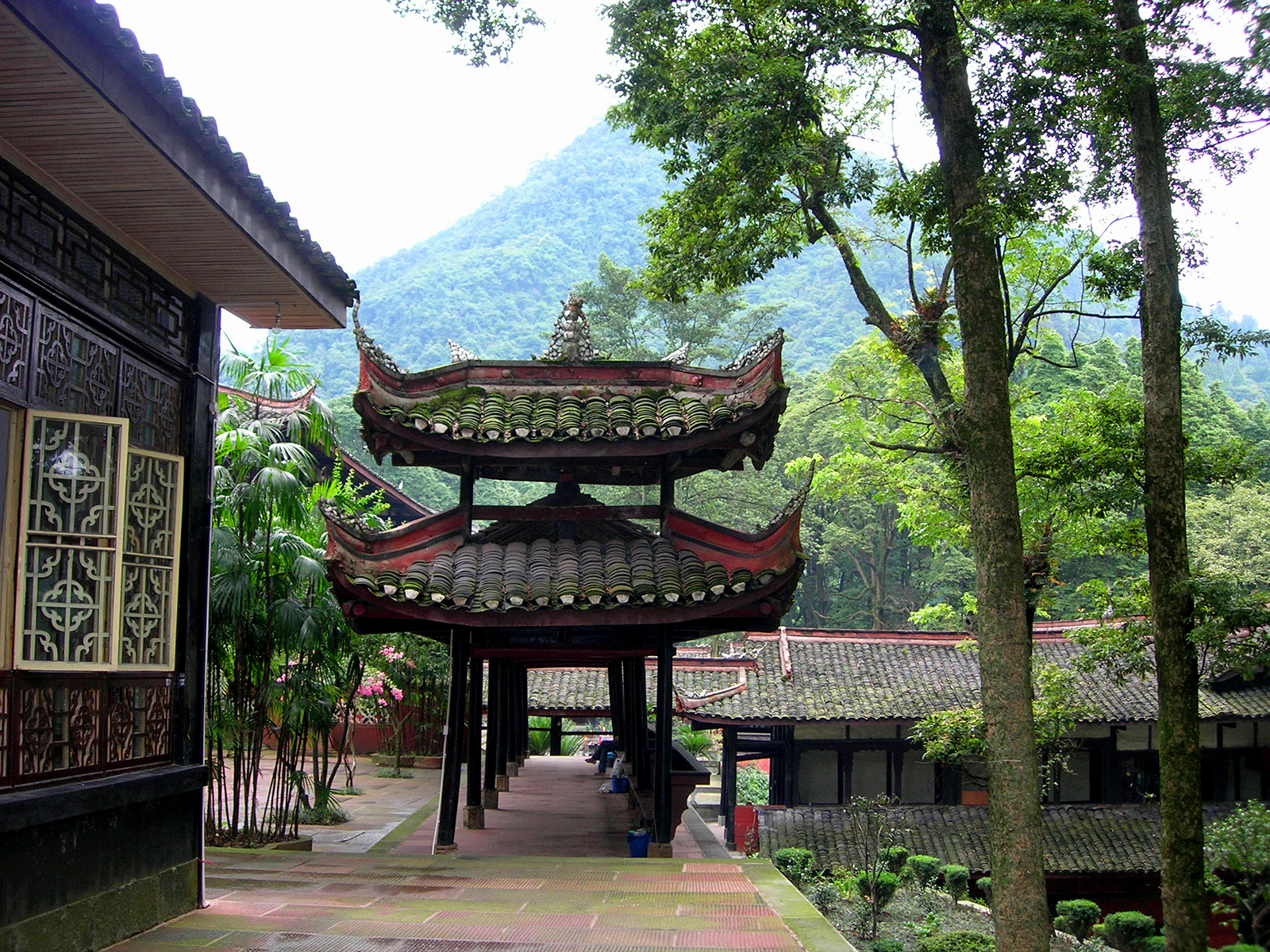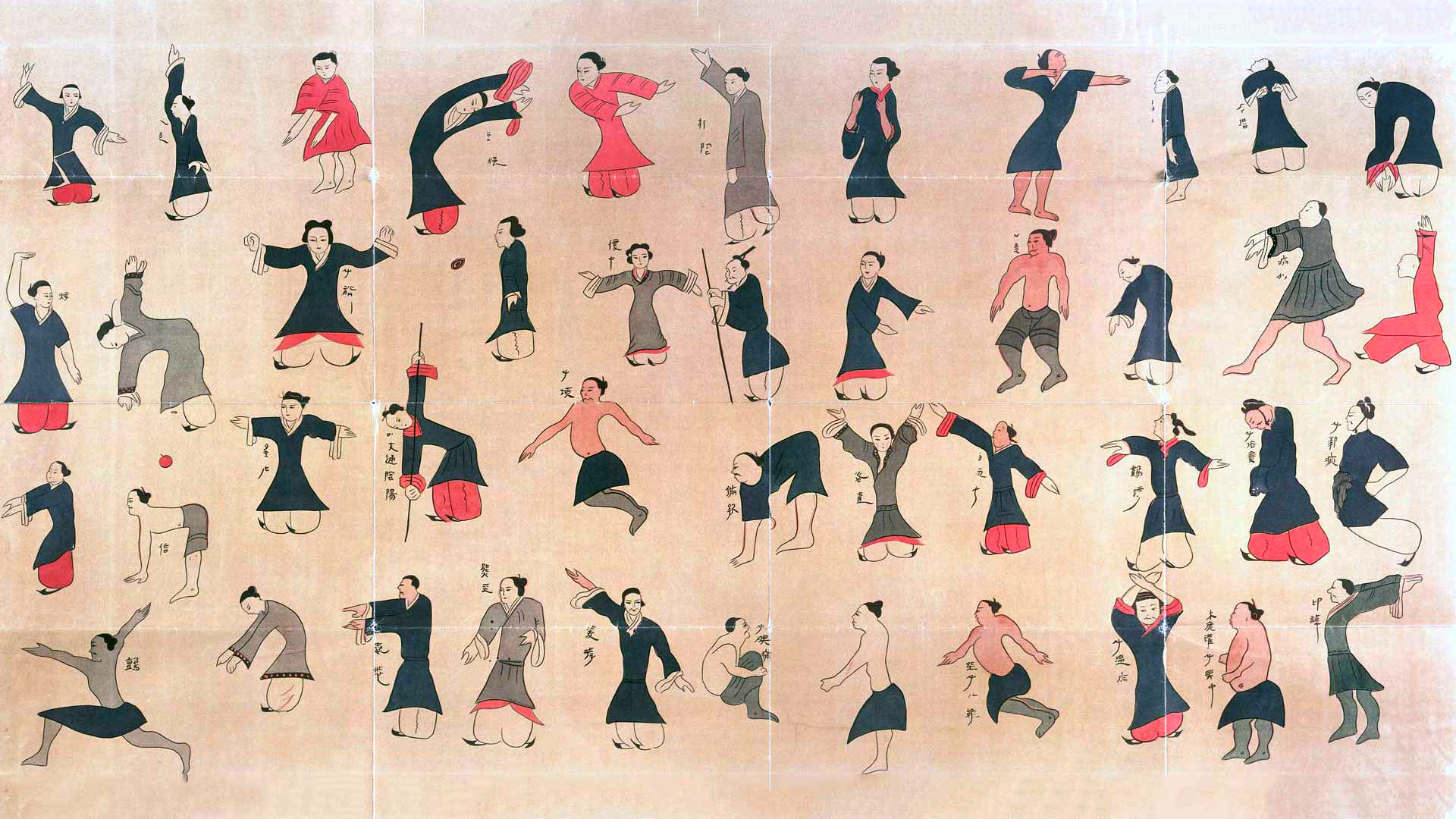Is Qigong a Safe Practice?
Is Qigong a Safe Practice?
Qigong is generally considered a very safe practice with minimal risks when performed properly. Here are the key points about the safety of qigong:
• Overall safety profile: Qigong is widely regarded as a gentle, low-impact mind-body exercise that is safe for most people. It is often compared in safety to activities like going for a walk in the park.
• Contraindications: There is really only one main contraindication for qigong practice, which is if someone has a history of psychotic disorders. For most other people, qigong can be practiced safely.
• Precautions: While generally safe, it’s advisable to:
• Build your qigong practice slowly, starting with simple exercises.
• Never force your energy to flow in unnatural ways.
• Find a qualified teacher for proper guidance, especially for beginners.
• Avoid advanced practices without proper preparation and supervision.
• Potential benefits: When practiced safely, qigong may offer various health benefits like reducing stress, improving balance, and potentially helping with conditions like depression and anxiety.
• Medical considerations: As with any new exercise regimen, it’s wise to consult with a healthcare provider before starting qigong, especially if you have existing health conditions.
Can Qigong help with Depression?
Can Qigong help with Depression?
Qigong has shown potential benefits in alleviating symptoms of depression. Various studies and reviews have explored its effectiveness, with mixed but generally positive findings.
• Meta-Analysis (2019): A meta-analysis reviewed the effectiveness of Qigong-based therapy for major depressive disorder (MDD). The pooled results indicated significant benefits in reducing depression severity compared to both active and passive control groups. Specifically, Qigong showed improved treatment response rates and remission rates. The study suggested that Qigong could be a beneficial complementary therapy for MDD, though it called for more well-designed trials to confirm these findings.
• Goodpath Review: Various studies have found Qigong effective in lessening both anxiety and depression. It has been compared favorably to other non-medication treatments like physical activity. Some studies specifically noted its benefits for individuals with depression co-occurring with other medical conditions, such as diabetes or cancer.
• Evolve Treatment Centers: Qigong has been shown to reduce symptoms of depression and anxiety in randomized controlled trials. It is considered an evidence-based complementary therapy that can significantly impact mental health by reducing stress, improving mood, and enhancing self-esteem.
Home2
History of Qigong and the Benefits of its Practice
History of Qigong and Zhineng Qigong
History of Qigong
Chinese practice of aligning breath, movement, and awareness for exercise, healing, and martial arts training
Origin
Qigong has a history that extends back more than 4,000 years, with roots in ancient Chinese meditative and gymnastic practices.
Influences
Qigong is influenced by philosophical traditions of Confucianism, Taoism, and Buddhism, traditional Chinese medicine, martial arts, as well as contemporary concepts of health, science, meditation, and exercise.
Archaeological Evidence
The first forms of qigong can be linked to ancient shamanic meditative practice and gymnastic exercises, with a nearly 7000-year-old Neolithic vessel depicting early qigong practices.
Qigong is an ancient Chinese practice with a rich history spanning thousands of years. Here’s an overview of its history and benefits:
History of Qigong:
1) Ancient origins: The earliest forms of qigong can be traced back over 4,000 years. Archaeological evidence suggests that shamanic meditative practices and gymnastic exercises from Neolithic times (around 5000-7000 years ago) were precursors to qigong.
2) Early development: The concept of qi (vital energy) was first recorded in the I Ching (Book of Changes) around 1122 BCE. Taoist philosophers like Laozi (around 450 BCE) described breathing techniques in writings like the Dao De Jing.
3) Traditional Chinese Medicine: Qigong became an integral part of Traditional Chinese Medicine, with roots in the Huangdi Neijing (Yellow Emperor’s Classic of Internal Medicine) from around 2600 BCE.
4) Philosophical influences: Confucianism, Taoism, and Buddhism all contributed to the development of qigong practices over the centuries.
5) Martial arts connection: Chinese martial arts incorporated qigong principles, with famous figures like Bodhidharma (ca. 500 CE) introducing exercises to Shaolin monks.
6) Modern era: The term “qigong” was established in 1949 by Liu Guizhen. After initial restrictions during the Cultural Revolution, qigong gained immense popularity in China during the 1980s and 1990s.
7) Global spread: Qigong began to spread internationally in the 1990s, gaining recognition worldwide through conferences, research, and publications.
Benefits of Qigong Practice:
1) Health improvement: Qigong is believed to enhance overall health and well-being by balancing and cultivating qi (vital energy).
2) Stress reduction: Regular practice can help reduce stress and promote relaxation.
3) Physical fitness: Qigong exercises improve flexibility, balance, and strength.
4) Mental clarity: Practitioners often report improved focus and mental clarity.
5) Emotional balance: Qigong is said to help regulate emotions and promote emotional well-being.
6) Longevity: Historically, qigong has been practiced as a method to extend lifespan and improve quality of life.
7) Preventive medicine: In Traditional Chinese Medicine, qigong is used as a preventive measure against illness.
8) Complementary therapy: Qigong is often used alongside conventional medical treatments to support healing and recovery.
9) Spiritual growth: For some practitioners, qigong serves as a path for spiritual development and self-cultivation.
10) Community building: Group qigong practice can foster a sense of community and social connection.
Qigong’s long history and diverse influences have resulted in a rich tradition that continues to evolve and adapt to modern needs. Its holistic approach to health and well-being has made it increasingly popular both in China and around the world.
How has Qigong evolved over the centuries
Qigong has evolved significantly over its long history, adapting to changing cultural, philosophical, and scientific contexts while maintaining its core focus on cultivating qi (vital energy). Here’s an overview of how qigong has evolved over the centuries:
1) Ancient origins (5000+ years ago):
• Emerged from shamanistic practices and animal-inspired movements
• Early forms focused on health preservation and longevity
2) Formalization in ancient China (2500-2000 years ago):
• Incorporation into Taoist philosophy and practices
• Development of breathing techniques and meditative practices
• Integration with Traditional Chinese Medicine concepts
3) Classical period (500 BCE – 500 CE):
• Influence of Confucianism, Taoism, and Buddhism
• Refinement of theories about qi and its circulation
• Incorporation into martial arts training
4) Medieval period (500-1500 CE):
• Further development of medical qigong practices
• Influence of alchemical traditions
• Creation of complex qigong systems by various schools
5) Early modern period (1500-1900):
• Synthesis of various qigong traditions
• Increased focus on spiritual and mystical aspects
• Integration with traditional Chinese medicine practices
6) Modern era (1900-present):
• Attempts to scientifically validate qigong practices
• Simplification and standardization of some forms for mass practice
• Spread to Western countries and global popularization
7) Contemporary developments:
• Integration with modern exercise and wellness trends
• Adaptation for specific health conditions and populations
• Use of technology for teaching and practice (e.g., online classes)
Key evolutionary aspects:
1) Terminology: The term “qigong” itself is relatively modern, coined in the 20th century. Earlier practices were known by various names like daoyin, neigong, and yangsheng.
2) Secularization: While originally closely tied to spiritual and religious practices, many modern forms of qigong have been secularized for broader appeal.
3) Scientific approach: In recent decades, there have been efforts to study qigong from a scientific perspective, leading to more evidence-based practices.
4) Diversification: Qigong has diversified into numerous styles and schools, each emphasizing different aspects (e.g., medical, martial, spiritual).
5) Globalization: As qigong spread beyond China, it has been influenced by and adapted to different cultural contexts.
6) Standardization efforts: In China, there have been attempts to standardize qigong practices, particularly in medical settings.
7) Integration with other practices: Qigong has been increasingly combined with other health and wellness practices, both Eastern and Western.
Throughout its evolution, qigong has maintained its core principles of cultivating qi through coordinated movement, breathing, and mental focus, while adapting to changing societal needs and understandings.
About Leshan Buddha – photos and importance today

Leshan Buddha – photos and importance today
The Leshan Giant Buddha, located in Sichuan province, China, is the world’s largest stone Buddha statue, standing at an impressive 71 meters (233 feet) tall.
Construction of the Buddha began in 713 AD during the Tang Dynasty, initiated by a Chinese Buddhist monk named Hai Tong. Hai Tong’s motivation for building the statue was to calm the turbulent waters at the confluence of the Min, Qingyi, and Dadu rivers, which had caused numerous shipping accidents. Legend has it that when funding for the project was threatened, Hai Tong gouged out his own eyes to demonstrate his dedication.
The construction of the Giant Buddha was a monumental task that spanned 90 years, finally reaching completion in 803 AD. Unfortunately, Hai Tong did not live to see the finished statue, as he passed away when only the shoulders had been completed. The project faced several interruptions due to insufficient funding but was eventually completed by Hai Tong’s disciples with the support of local governors.
The statue is carved into a red sandstone cliff face, with remarkable details. Its fingers are 8.3 meters long, its shoulders span 28 meters, and its ears, made of wood covered in mud, are 7 meters long. The Buddha sits at the confluence of three rivers, where it has stood for over 1,300 years.
Today, the Leshan Giant Buddha holds great importance as both a religious site and a major tourist attraction:
1) UNESCO World Heritage Site: In 1996, it was inscribed as a UNESCO World Heritage site along with Mount Emei, recognizing its exceptional cultural significance.
2) Buddhist pilgrimage site: The area around the Buddha has become one of China’s most important centers of Buddhism.
3) Tourist attraction: It receives millions of visitors annually, contributing significantly to the local economy.
4) Archaeological importance: The site, including surrounding historic structures, provides valuable insights into ancient Chinese lifestyles and engineering techniques.
5) Cultural symbol: The Buddha represents the integration of Buddhism into Chinese culture and the artistic achievements of the Tang Dynasty.
Visitors can view the Buddha from various perspectives, either by walking down a steep stairway to its feet or by taking a boat ride on the river for a panoramic view. However, the statue faces ongoing challenges from erosion and pollution, necessitating continuous preservation efforts.
The Leshan Giant Buddha stands as a testament to ancient Chinese engineering, religious devotion, and artistic skill, continuing to inspire awe and reverence in visitors from around the world.
Leshan Giant Buddha-Mt Emei,tourism promotional video
What are some lesser-known facts about the Leshan Buddha
1) The Buddha’s drainage system is ingenious. There is an intricate system of hidden gutters and channels built into the statue that help drain water and prevent weathering. This ancient drainage system has helped preserve the statue for over 1,300 years.
2) The Buddha’s ears are made of wood and clay, not stone like the rest of the statue. They are 7 meters long and were added after the main carving was completed.
3) Local architectural regulations prohibit buildings in Leshan from being taller than the Buddha statue. The tallest building in the city is 68 meters high, while the Buddha is 71 meters tall.
4) During construction, the stones removed from the cliff face were deposited into the river below. This actually helped calm the turbulent waters at the confluence of the three rivers, making the area safer for boats as the monk Hai Tong had originally intended.
5) The Buddha’s fingernails are capable of holding a seated person. Each nail is about 1.5 meters long.
6) There are over 1,000 coiled hair buns on the Buddha’s head. These intricate carvings have endured for centuries.
7) The statue is so large that a traditional Chinese proverb states: “The mountain is a Buddha and the Buddha is a mountain”.
8) During World War II, Japanese warplanes reportedly tried to bomb the Buddha statue but were unable to accurately target it due to the dense fog that often surrounds the area.
9) In addition to the main Buddha statue, there are numerous smaller Buddha carvings in the surrounding cliffs. Over 90 stone Buddha statues have been carved into the cliff faces near the giant Buddha.
10) The construction of the Buddha statue actually took three generations of workers to complete, spanning 90 years from 713 AD to 803 AD.
These facts highlight the remarkable engineering, cultural significance, and enduring legacy of the Leshan Giant Buddha.
Thousand-Armed Guanyin

A “Thousand Hand Buddha” is in the Oriental Buddha Park, which is adjacent to the Leshan Giant Buddha. This park showcases various Buddhist statues built in different styles.
1) The Oriental Buddha Park, opened in 1994, is described as a “massive religio-cultural theme park” that displays a variety of Buddhist statues in different styles, representing Buddhism from various Asian countries.
2) One of the statues in this park is mentioned as “The Thousand Hand Buddha, built in a Hindu influenced style”. This is likely the statue you’re referring to, but it’s not described as golden in the provided information.
3) It’s worth noting that thousand-armed depictions of Buddha or Bodhisattvas (particularly Avalokiteshvara) are common in Buddhist iconography, symbolizing the ability to help all sentient beings simultaneously.
4) The Leshan area is known for its rich Buddhist heritage, with numerous temples and statues beyond just the famous Giant Buddha.
Qiān Shǒu Guānyīn (千手观音) refers to the Thousand-Armed Guanyin, a popular representation of the bodhisattva Avalokitesvara in Chinese Buddhism. Here are some key points about this iconic figure:
1) Meaning: The name translates to “Thousand-Hand Guanyin” in English. Guanyin is the Chinese name for Avalokitesvara, the bodhisattva of compassion.
2) Iconography: This form of Guanyin is depicted with multiple arms, usually 1000, symbolizing the ability to reach out and help all sentient beings simultaneously. Each hand typically has an eye in its palm, representing the all-seeing nature of compassion.
3) Origin: The story of the Thousand-Armed Guanyin is linked to a Chinese legend about Princess Miaoshan, who sacrificed her eyes and arms to cure her father’s illness. Her father, moved by her sacrifice, ordered a statue made of her with “intact arms and eyes” (quánshǒu-quányǎn 全手全眼), which was misheard as “thousand arms and eyes” (qiānshǒu-qiānyǎn 千手千眼).
4) Symbolism: The multiple arms represent Guanyin’s great compassion and ability to help many beings at once. The eyes in each palm symbolize the bodhisattva’s all-seeing wisdom.
5) Worship: Thousand-Armed Guanyin is widely venerated across East Asia, particularly in China, Japan, and Korea. Devotees pray to this form of Guanyin for protection, compassion, and aid in times of difficulty.
6) Cultural impact: This representation of Guanyin has inspired various art forms, including sculptures, paintings, and even dance performances. The “Thousand-Hand Guanyin Dance” is a famous Chinese dance that attempts to recreate the visual effect of the multiple-armed deity.
7) Buddhist philosophy: In Buddhism, this form of Guanyin embodies the concept of skillful means (upaya), using various methods to help beings according to their individual needs and capacities.
While not specifically related to the Leshan Buddha, the Thousand-Armed Guanyin is an important figure in Chinese Buddhism and culture, representing the vast reach of compassion and the multifaceted nature of Buddhist practice.
Medical Qigong that has its roots in ancient China

Medical Qigong is a easy-to-learn enjoyable exercise that has its roots in ancient China.
For over 5,000 years, it has developed based on powerful and secret Taoist and Buddhist techniques, healing practices, Confucious’ principles for morality, martial art, and has just recently become available for the common people. It’s a complete system for self healing and self development. Consistent practice brings tremendous benefits.
Group Practice When people practice Qigong in a group, they can create a strong healing Qi Field through physical movement and intention. The power of this Qi Field can then be used to benefit oneself and all living beings and change the environment. Over 185 different diseases were healed in the first non-medicine based hospital in China simply through practicing Medical Qigong. This is the same form we teach. Practicing Qigong also helps refine one’s own energy as far as quality and abilities.
Why Wait! Learn Qigong Now So No Disease Can Threaten Your Life Later
With time, our body’s natural defenses weaken and we become susceptible to disease. Modern medicine can only help people mend their illnesses without healing the cause of the disease. Qigong, however, derives its wisdom from from the eternal universal wisdom, universal laws and wisdom of nature, from that which is a harmonious and self correcting system. Through Medical Qigong practice, we can gradually expand our awareness, develop deeper understanding of nature of reality and grow our compassion toward all life.
Are You Ready to Heal Yourself?
Are You Ready to Embark on a Beautiful Healing Journey?
This opportunity is for people who are seeking to improve their current state of health, live free from heavy medicine dependency and enjoy quality of life. Understanding that quality of life first equals good health is essential. Next comes one’s ability to provide for and sustain him/herself. Both of these depend on making conscious, good choices every day. Many people say they don’t have the time to make these choices, as they’re busy. Yet when some day they learn they are in a final stage of cancer or some serious disease, they’re willing to do anything and everything, realizing how precious life is.
The current system of health care in our country is, firstly, not always available to all people at its best, and secondly, it’s not based on eliminating the root causes of disease. Knowing why we experience certain illness is of essence and involves working with our mental and emotional programming, changing patterns, habits, and attitudes. This is the only reliable way to self-improvement and achieving a good quality of life. While it’s fine to use medicines and herbs to temporarily alleviate symptoms, it is our responsibility to look for a permanent solution to health issues. Any person who has self respect and self value needs to ask these questions: Why am I experiencing such a symptom/illness? What is it that I’m doing wrong in my life? How can I get rid of this problem? Do I have all the resources to pay someone to take care of me when I get old, sick, and immobile? Is this person going to be compassionate enough to deal with my personal hygiene and feel satisfied with their job? Is there a way for me to enjoy good health in my golden age without too much dependency? Can I be certain that if my life depends on certain medicine it will always be available to me?
We live in times of fast changes, we’re overloaded with work and family responsibilities, stress, tons of information/disinformation that can cause a great deal of anxiety and confusion. Although a human being is capable of amazing things, people react and respond differently to what’s on their plate. Learning how to achieve balance and enjoy good health in this life is our own responsibility. This isn’t that difficult with an enjoyable and reliable practice one can do daily or even every other day. If life is difficult, if the world seems like an uncertain, depressing, or even frightening place through our own experiences, we need to look no further than changing ourselves little by little. Thus the only way to change the world is to start making changes on a personal level. Why is such practice necessary? It is a stepping stone to creating a new life for one self. Without it, without changing energetically, we will be trapped in a vicious circle of old patterns.
When we first experience a symptom of disharmony or illness, then it’s the exact time, the perfect timing to address it before it gets out of hand. This can of course be applied to any problem, but why do we keep ignoring our health of all things?.. People who have an advanced disease have failed to pay attention to the early warnings from their body/mind. They need to understand that the amount of time they invest into self healing is reciprocal to the level of disease. It’s easy to form an unhealthy habit with a good excuse and continue that path for many years. Therefore, we need to understand that healing takes time and commitment.
As a Zhineng Qigong instructor trained by the founders and healers of the first non-medicine based hospital in China known for its healing success rate of 95% and higher, I’m currently offering an introductory program to groups of people who are ready to make a change and start their journey to better health. Yes, this is a journey, as you’ll get to know yourself, start changing your current patterns, open energy blockages and gradually refine the quality of your energy on all levels. This particular qigong practice involves physical movement, energy movement (mind induced qi), visualization, and relaxation in a gentle flowing motion. Group practice amplifies and accelerates the healing effects of the exercise. I’m very experienced in teaching and healing, internationally certified, have practiced in some of the most sacred Buddhist and Taoist mountains in China, and prior to qigong have practiced yoga for over 13 years.
If you are a yoga studio owner or have your own healing center and would like to introduce a qigong program, or a weekend workshop to the local community, please contact me.
I’m also offering this program to groups of 10-20 people, and this could be arranged in a spacious room or area that is nature rich/feng-shuied.
Ongoing Weekly classes are also available for retirement communities on a twice-a-week basis, or for alcohol/drug abuse rehab centers.
Classes for children are available and they target opening and enhancing the creative flow/ imagination. After all, Albert Einstein has written that “imagination is more important than knowledge.”
Individual lessons are also available with some requirements.
Please contact me with further inquiries.





